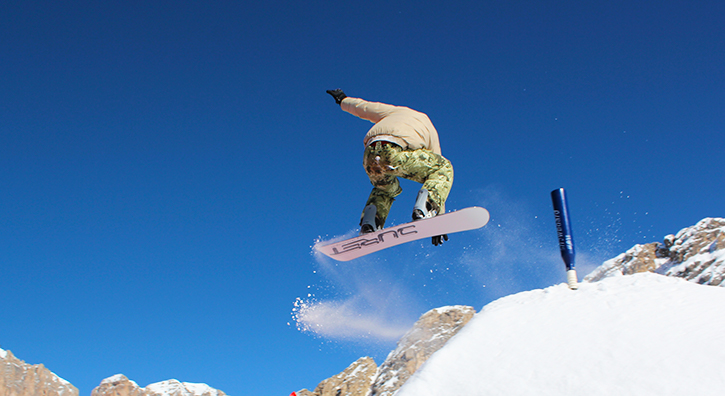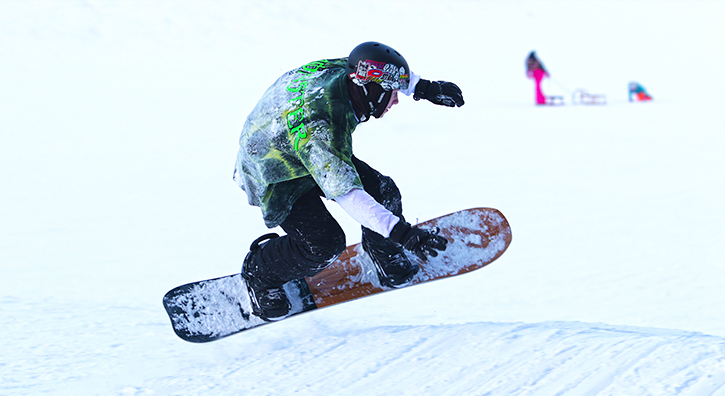0800 260 5082
Available from Monday to Friday from 9am to 7pm, and Saturday from 10am to 7pm. Closed on Sunday.
Available from Monday to Friday from 9am to 7pm, and Saturday from 10am to 7pm. Closed on Sunday.
Snowboarding and skiing are exciting winter sports that combine speed, skill, and adventure, offering a unique way to experience the mountain. Whether you're a beginner or an experienced rider, both sports provide an exhilarating way to glide down the slopes. With the proper equipment, technique, and guidance, you can enjoy a fantastic time on the snow.
Before hitting the slopes, it’s essential to understand the fundamentals of snowboarding and skiing, such as stance, gear, and controlling your board or skis. Whether you’re heading to a renowned resort or a quieter place, both activities offer an exciting and challenging experience for all levels. This guide will help you get prepared for your trip, from choosing the right snowboard or skis to taking lessons, ensuring you have a smooth and enjoyable adventure.
Title Our Top Resorts for Skiing This Winter

The first step in snowboarding or skiing is choosing the right equipment. Your snowboard or skis should match your weight and skill level, as these factors determine the type of gear you need. A good boot ensures comfort and control, making it easier to stand and maneuver on the slopes. A comfortable boot that fits well will help you feel secure, allowing you to focus on technique rather than discomfort. Beginners should focus on developing a solid foot stance to gain better control of their board or skis while learning the basics of snowboarding or skiing on easier slopes.
When snowboarding or skiing, layering is key to staying comfortable. Start with a moisture-wicking base layer, add an insulating middle layer, and top it off with a waterproof outer layer. This setup helps regulate your body temperature, keeping you warm without overheating. Having the right gear allows for easier movement, making your experience on the mountain more enjoyable.
A helmet is an important piece of safety equipment for skiers and snowboarders, offering protection against falls and collisions. Ensure your bindings are properly adjusted for a good fit, allowing you to manage your board or skis effectively. A secure setup helps you stay in control when going downhill, making it safer and easier to navigate the slopes. Additionally, don’t forget to purchase your lift ticket in advance to avoid long lines and get quick access to the ski lifts.

Your stance plays a crucial role in how you ride. If your left foot leads, you're considered "regular," and if your right foot leads, you're "goofy." Understanding your natural stance helps you set up your board for optimal control. Whether you're practicing on a beginner run or trying more advanced slopes, having the right stance ensures stability and comfort as you ride. Skiers, on the other hand, focus on keeping a balanced posture with knees slightly bent for better control.
Learning how to control your board or skis is vital for success on the slopes. Start by practicing turns and weight shifts to control your direction on the snow. It’s important to keep your foot movements fluid and balanced to stay in control. As you gain confidence, you can practice carving down steeper slopes, increasing your speed and control on more advanced runs. A great tip is to always look ahead to anticipate turns and adjust your stance accordingly.



If you're new to snowboarding or skiing, taking a lesson is essential to build a solid foundation. Instructors will teach you the basic techniques for standing, turning, and controlling your board or skis. Starting with a beginner slope will help you learn at a comfortable pace, and instructors will offer valuable tips for improving your skills, making it easier to progress in the sport. Don’t hesitate to join a class, as group or private lessons can accelerate your learning curve and give you the confidence to tackle more challenging terrain.
Most resorts feature a variety of slopes, and it’s important to choose runs that match your ability. If you’re a beginner, start with green runs, which are designed for easy snowboarding and skiing. As you gain confidence, you can challenge yourself with blue or black runs, which offer more challenging terrain. Always remember to stay within your limits and progress gradually. Before heading out, look at the trail map and make sure you have your lift ticket to access all the areas suitable for your level.